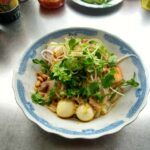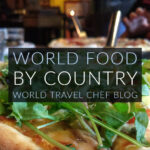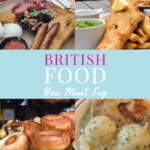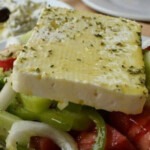This post may contain affiliate links.
What are the best Vietnamese dishes for you to try in Vietnam, or in your local Vietnamese restaurant? I give you my top 10 best Vietnamese dishes. If you’re new to Vietnamese food, you should try all of these, if you’re a Vietnamese food expert, what other dishes would you consider best? These are my must-eat Vietnamese foods every time I’m in Vietnam. Some of these dishes are regional specialities and may not be available, or may be a little different, in some parts of Vietnam. My number 1 top favourite Vietnamese dish is at the end of the post.
Op La – ốp la The Vietnamese Full English Breakfast
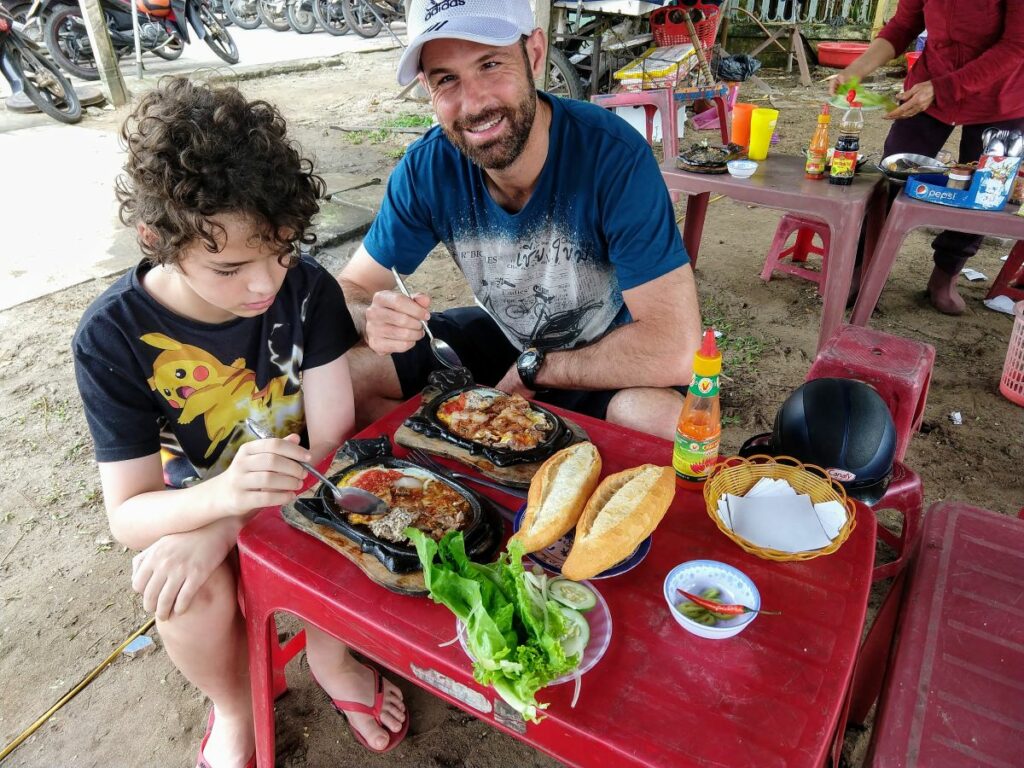
Op la is a simple dish that I’ve seen various versions of across the world. The Vietnamese version has two fried eggs in the pan and then scattered on top are a selection of thin-sliced cooked meats such as ham, sausage, beef or pork. It can also have fried onions or scallions and caramelised peppers.
Street stalls will sell this as a main breakfast dish. Combine it with a Banh Mi (bread) for a breakfast sandwich. This is the Vietnamese version of a full English and is a throwback to French occupation in Vietnam
Banh Mi – Banh Mi
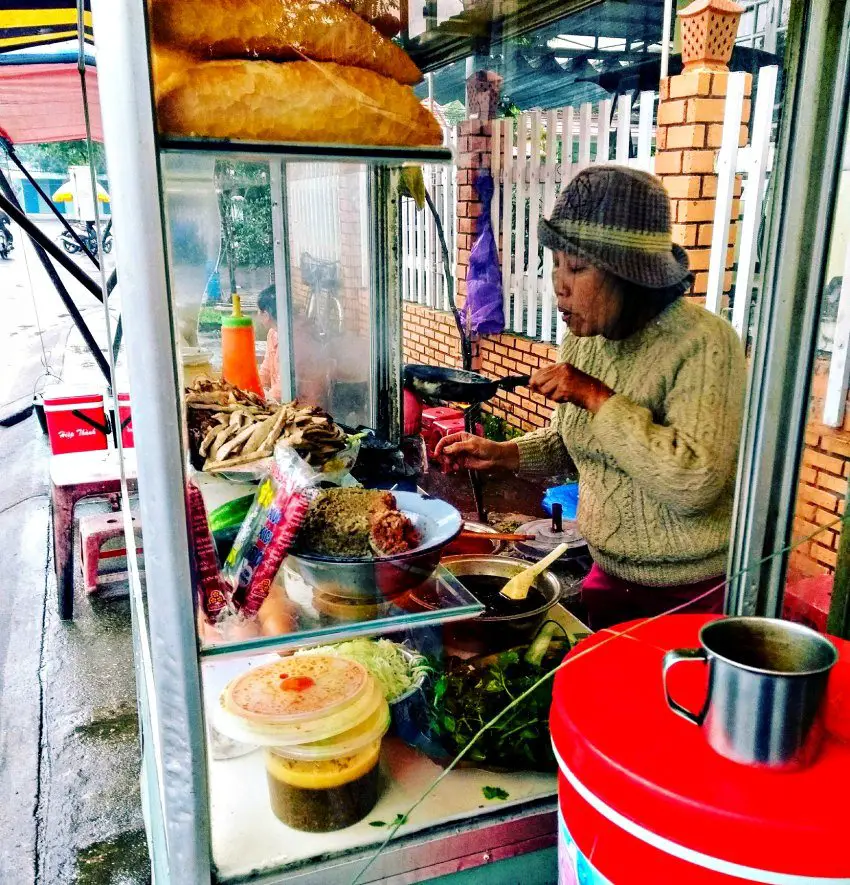
Vietnam’s second national dish is a sandwich made with a crusty baguette. Another influence from the French occupation of the 1900s. Banh mi just means bread, a small person-sized baguette, but the banh mi stalls generally serve filled baguette sandwiches.
The ingredients that go into making a traditional banh mi sandwich are pate, pickled carrot/daikon, fresh herbs, cucumber and pork belly slices plus some sort of pate. A soy-based sauce or mayonnaise is also used.
While this is the most common variety you can get pretty much whatever the banh mi maker has available. Egg or cheese (real cheese or cheese triangles) are quite common if you are vegetarian.
Tuna and other fish also appear in Vietnamese banh mi.
You’ll find banh mi across the whole country with regional variables specific to the availability of ingredients. Watch out for MSG which is being used more and more in Vietnam and isn’t a nice additive. I have to admit to trying a lot more than one of these for my Vietnamese food blog. It was my go-to snack or light lunch when we lived in Vietnam.
Cao Lao – Cau Lao
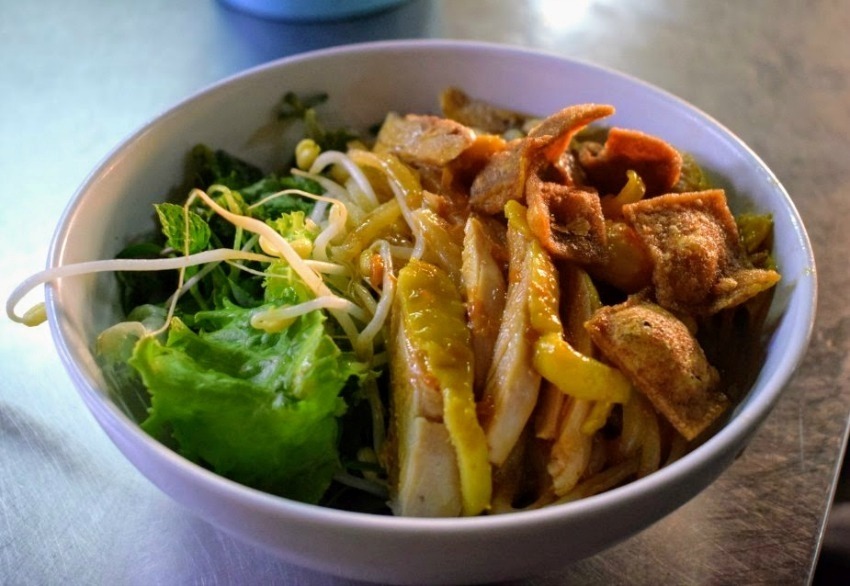
The Vietnamese cau Lao noodle dish is only made in one town in Central Vietnam. This is because the noodles have to be made from the water from the Ba le Well which is located in UNESCO-listed Hoi An Old Town.
You’ll find this simple dish in all the restaurants around Hoi An and a few varieties such as vegetarian or chicken but if it has cao lao noodles then it is cao lao.
The ingredients are placed in a bowl and it is the customer who will mix them together after serving, it is known locally as a “mixing dish”. The main ingredients are the noodles, fresh herbs, fried sesame wonton skins or prawn crackers and char sui pork pieces. It contains a small amount of sauce in the bottom, no soup, and often has an accompaniment of chilli jam.
White Rose – Hoa hồng trắng
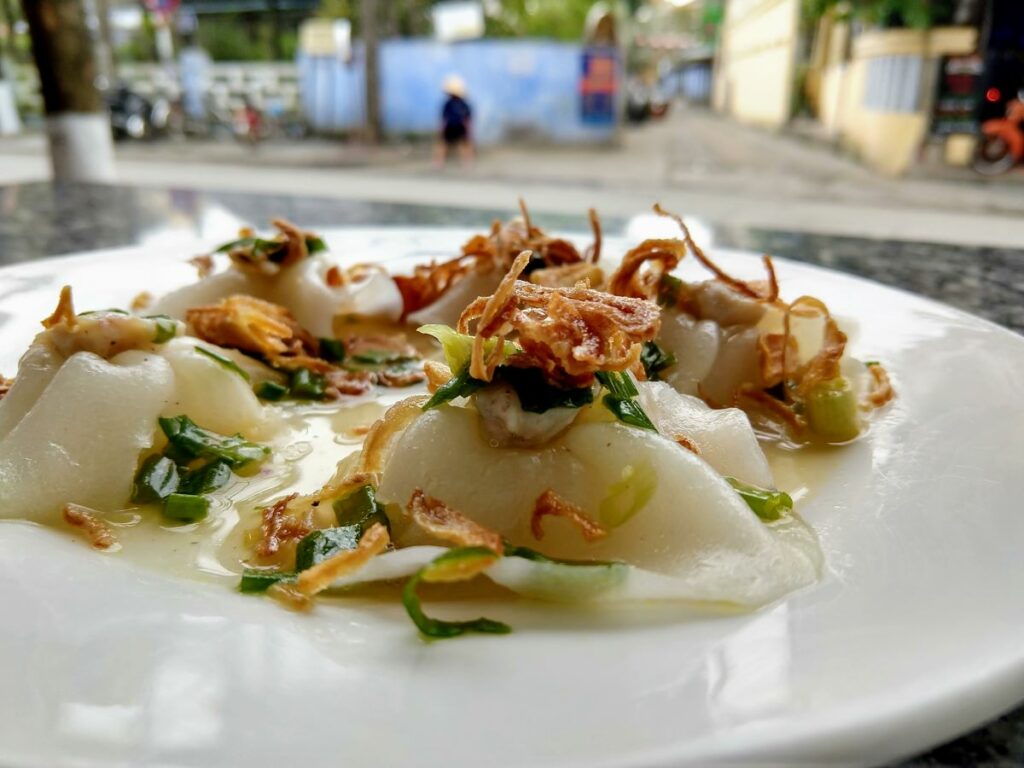
The white rose is another local delicacy from Hoi An in Central Vietnam.
White Rose are a steamed shrimp dumpling made from ranslucent dough. The little parcels are steamed and served with fried shallots and a dipping sauce on the side.
These dumplings are said to all be made in one restaurant just outside the Hoi An Old Town. A must visit restaurant, that besides drinks only has two items on the menu.
We have eaten these dumplings in the White Rose Restaurant and in many small restaurants in Hoi An.
Mi Quang – Mì Quảng
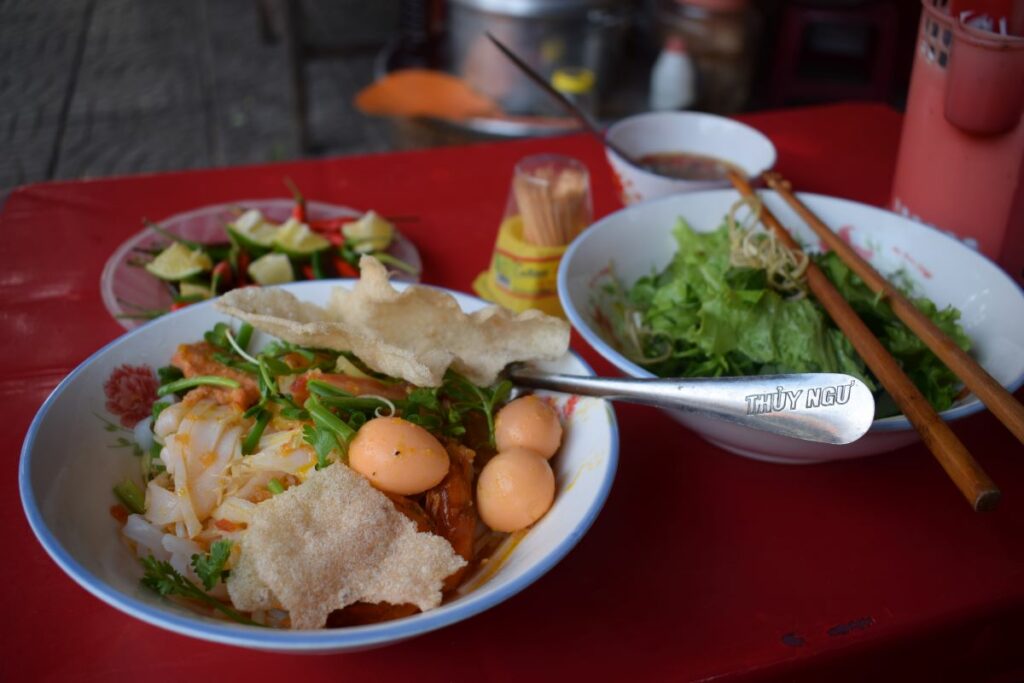
This central Vietnamese dish is one of the most famous and popular, especially in Hoi An and Danang.
Seen in the street stalls and small specialist food outlets across the region, it is a brilliant way to start your day. We often eat mi quang for breakfast in Vietnam and it has to be up there as one of the best breakfasts in the world.
The dish is made with white rice noodles, pork slices, unpeeled prawns, sesame rice crackers, peanuts and two cooked quail eggs.
A highly flavourful broth is poured over the noodles and meat to add flavour and finish the dish. Herbs, lime, banana flowers and chilli is served as an accompaniment. Read my in depth review of mi quang here.
Banh Xeo – Bánh Xèo
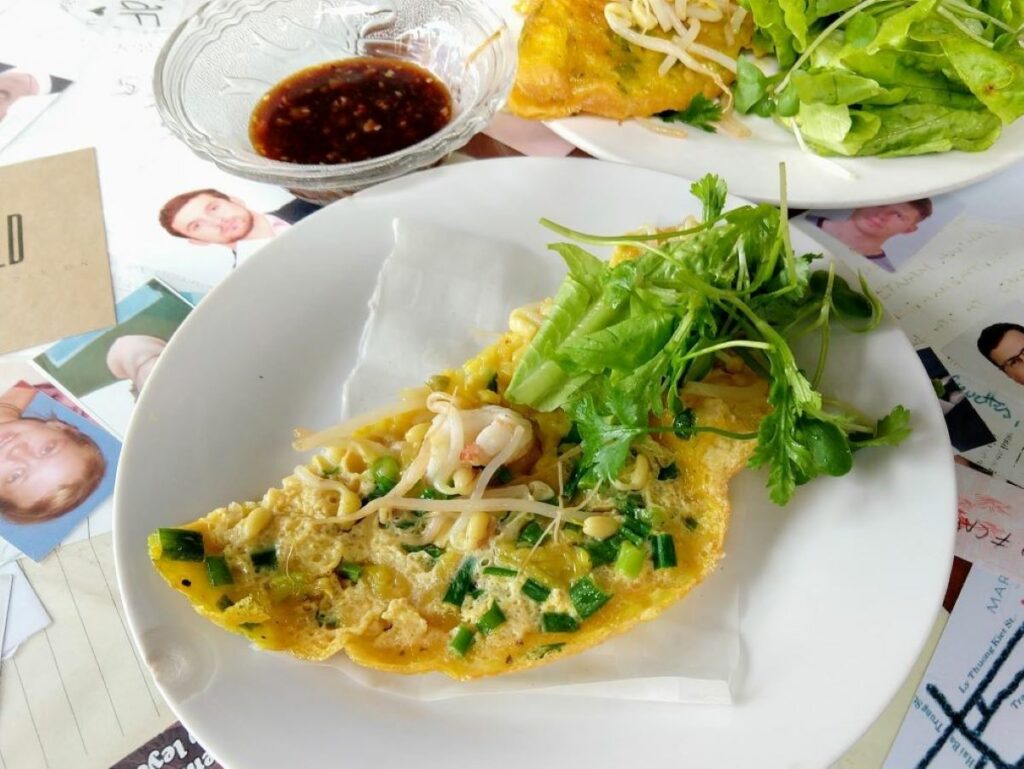
Banh xeo translates as a sizzling pancake due to the noise the batter makes when you pour it into the hot oil in the pan.
This dish is a multi-part dish with the pancakes of prawn (and or pork) being cooked and brought out to the table along with salad, rice paper and a dipping sauce. You wrap the pancake with cucumber and fresh herbs inside a rice paper and finally dip it in the dipping sauce before eating.
Banh Xeo is served in restaurants and street stalls. Just be aware that the prawns won’t be peeled in the street stall variety but are small enough to eat with the shell on.
The dipping sauce is traditionally a nouc cham, a sweetened fish sauce. Interestingly the further north you go the smaller the pancake gets. In some parts of Saigon, they are almost dosa size. This is my son’s favourite Vietnamese food, so if you’re visiting Vietnam with kids, this would be a good Vietnamese dish to introduce them to.
We have found vegetarian banh xeo easily, often containing mushroom in place or pork or prawn.
Goi Cuon – Gỏi cuốn
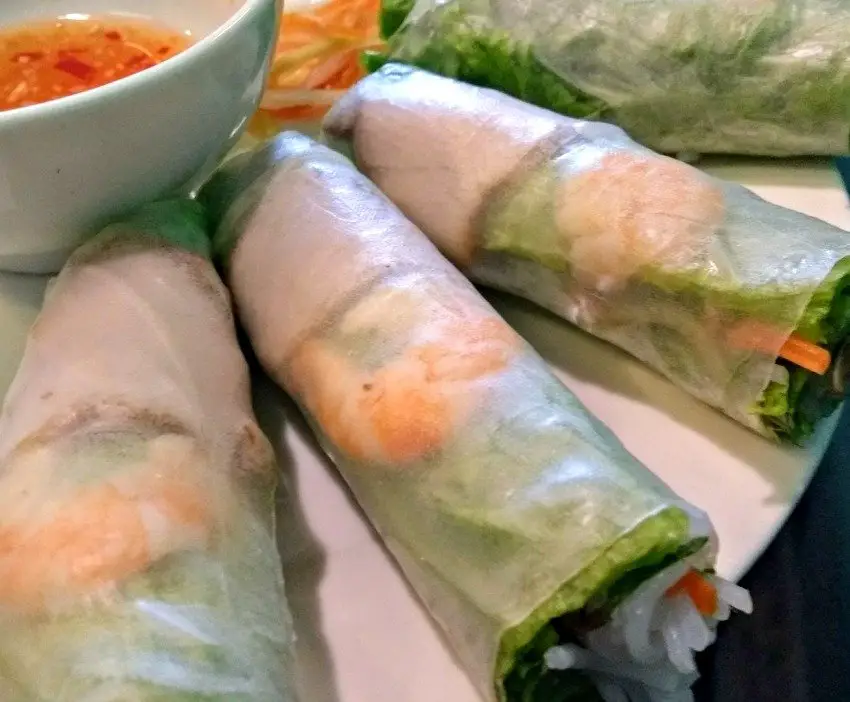
These uncooked Vietnamese rice paper spring rolls are found the length of Vietnam from restaurants, street stalls and markets. The dried rice paper is chickly softened in cold water and then laid flat with ingredients placed on top before rolling into a cigar shape.
In my career as a chef, I’ve prepared and cooked these fresh spring rolls many times, at home and in restaurants. They’re actually incredibly easy to make.
Vietnamese rice paper rolls will contain meat or be vegetarian, pork and prawns are common, as are vegetables,tofu and omelette strips. Fresh herbs really bring these spring rolls to life. and other.
They are served with either a sweet fish sauce dip and /or a hoisin and peanut dip. Great for a snack on the go or as a starter to share.
Spring rolls in Vietnam can also be cooked, some are steamed, some are fried. All three versions are very tasty and the dipping sauce is what really makes this simple Vietnamese dish a winner.
Com Ga- Cơm Gà
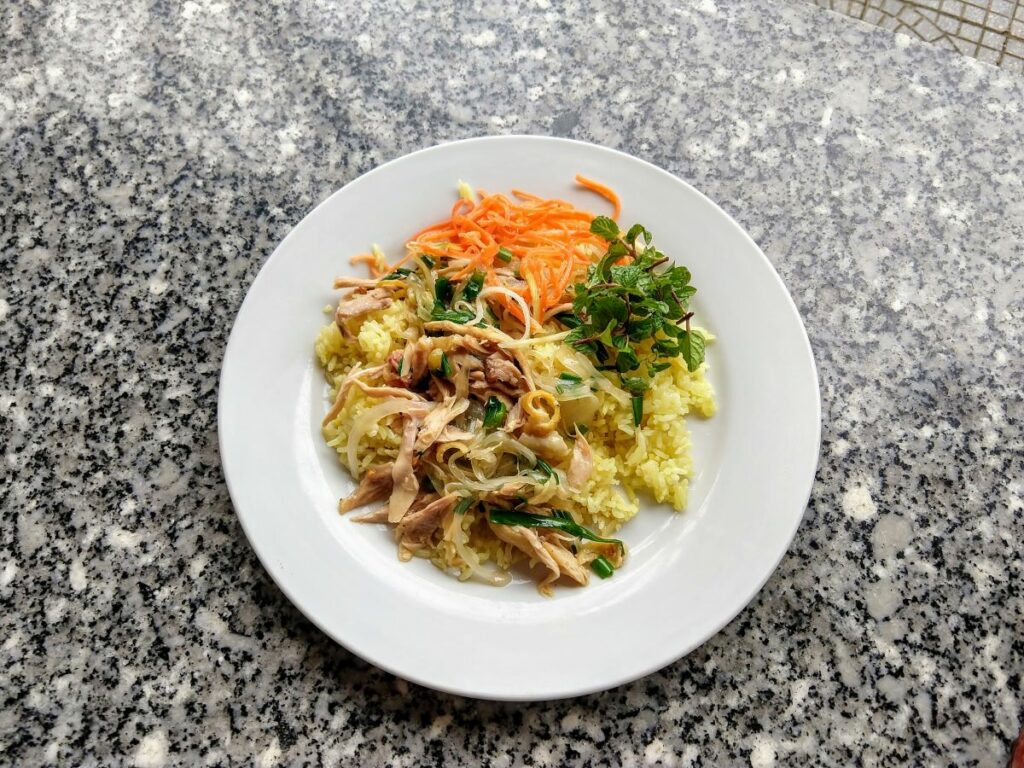
Simply translated as chicken rice this dish is everywhere across Vietnam (and most of Asia) from bus stops to restaurants and everywhere in between. Quite a boring dish by comparison to the wealth of great food that the Vietnamese have, it still has its place if you want something simple.
Look around and you’ll see a few variations depending on location. The high-end restaurants will probably do it in a totally different way to the bus stop.
A word of warning if you don’t like chicken skin, the chicken is usually steamed with the skin on resulting in a gelatinous texture. I personally don’t like this but others love it.
Pho Bo – Phở Bồ and Pho Ga – Phổ Ga
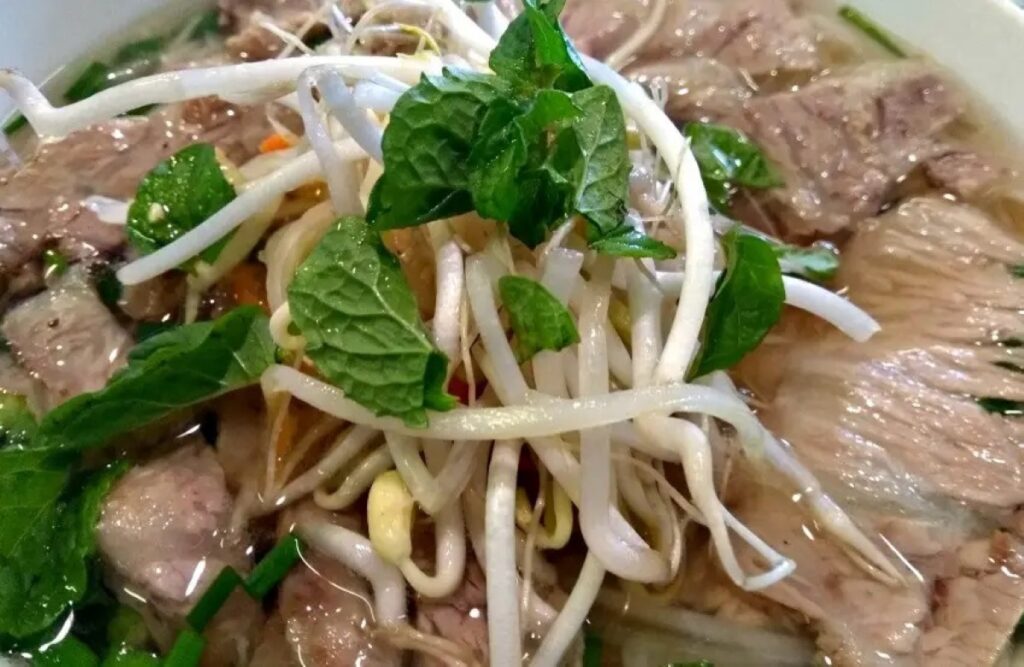
Pho (pronounced fur) is arguably the most famous Vietnamese dish. It is a highly flavoured soup containing noodles, meat and veg. The fresh ingredients are barely cooked in the hot tasty broth.
Pho originated in the north before spreading across the whole of Vietnam, changing slightly region by region. The northern and southern Pho is different from the south having fresh herbs and sprouts whereas the north misses these ingredients.
Usually made with beef (pho bo), capho n also be made with chicken (pho ga) but this isn’t as commonplace. The broth is made with beef bones and charred onion, star anise and ginger. Vegetarian or vegan versions of pho can also be found in Vietnam.
Garnishes for pho include Asian mint, thorny wide-leaf Asian coriander, lime wedges and bean sprouts. You’ll find Pho everywhere in Vietnam and in quite a few countries where the Vietnamese have emigrated.
Bun Cha – Bún chả
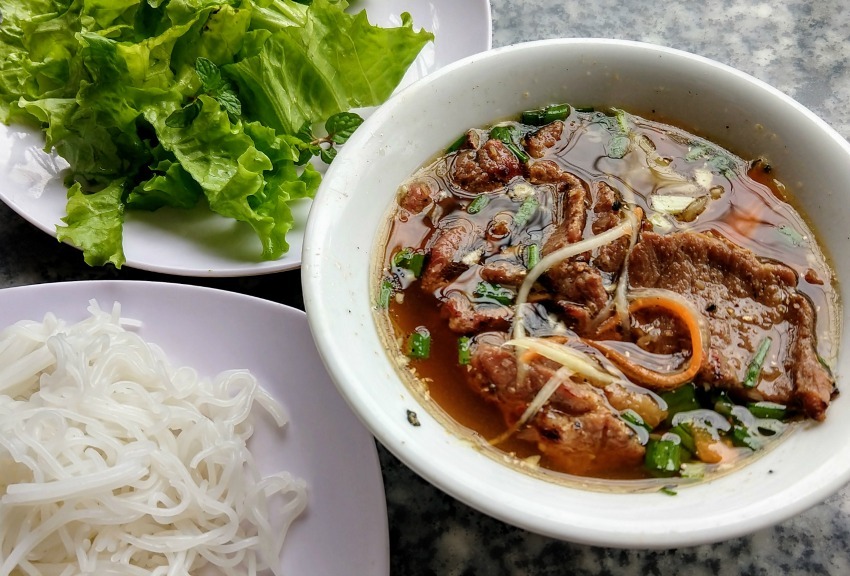
This last dish originated in Hanoi in the north of Vietnam. It is a dish of grilled fatty pork served up with a sweet broth/dipping sauce over thin white rice noodles. I’ve also seen meatballs used in bun cha, this is likely a regional change.
Bun cha gets a garnish of fresh Asian herbs and shredded banana flowers to really lift the dish.
Hanoi people will eat this dish by putting all the ingredients into the broth and then eating it like a pho. People from the south will sometime wrap everything in a large lettuce leaf and then dip it back into the broth. The choice is yours. I’ve been told that President Obama thought this was a particularly delicious dish when he was in Vietnam.
Bun Bo Hue – Bún Bò Huế
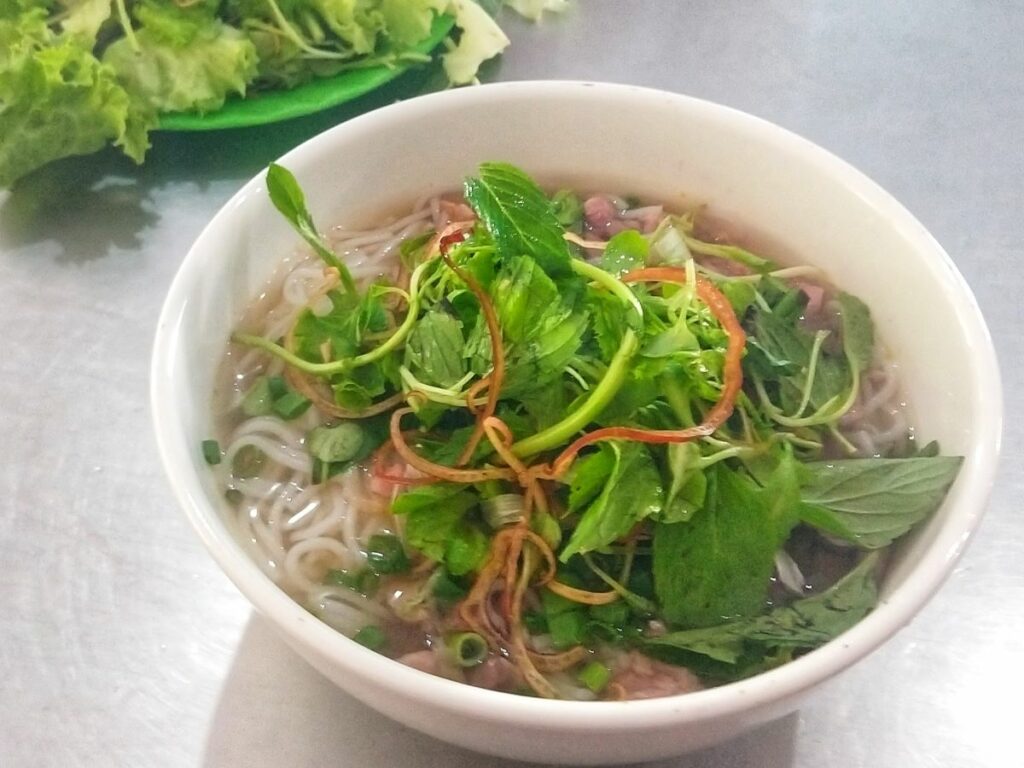
As the name suggests this is a beef noodle soup from the old imperial city of Hue in central Vietnam.
Bun bo Hue is a balance of spicy, sour, salty and sweet flavours with a strong lemongrass flavour. Made with rice vermicelli noodles and having a freshness that a traditional Pho Bo doesn’t, this is a great dish if you just fancy a change from pho. Pig blood coagulated cubes are also included in bun bo hue sometimes so check out what they use before you order if that isn’t to your liking. We’ve also seen this dish served with crab balls, which was very tasty.
If you'd like to hire a car during your stay, use this car rental comparison tool to find the best deal!
Please check out our Pinterest account for loads of food and recipes from around the world!

